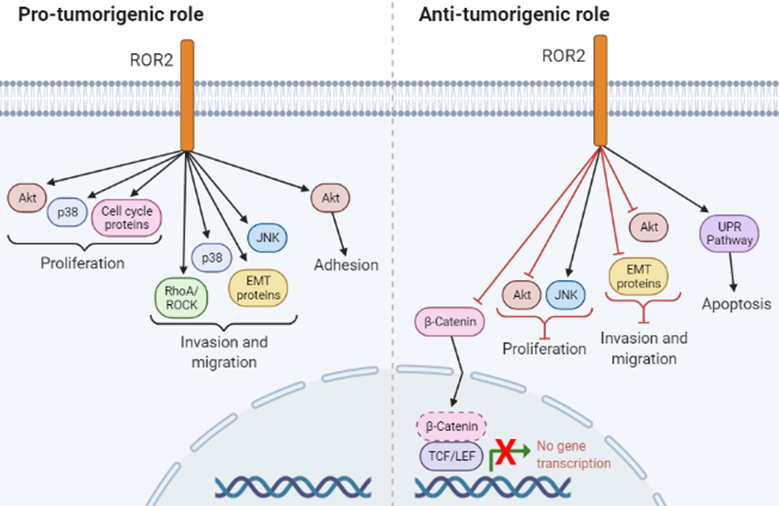Preprint
Review
Cellular and Molecular Mechanisms Implicated in the Dual Role of ROR2 in Cancer
This version is not peer-reviewed.
Submitted:
16 November 2021
Posted:
17 November 2021
You are already at the latest version
A peer-reviewed article of this preprint also exists.
Abstract
The Wnt pathway plays an essential role in the initiation and progression of various types of cancer. ROR1 and ROR2 are Wnt receptors that are critical for β-catenin-independent (non-canonical) pathways and have been linked to processes driving tumor development and progression, such as cell proliferation, survival, invasion, and therapy resistance. Both receptors have garnered interest as potential therapeutic targets since they are largely absent in adult tissue, are overexpressed in several cancers, and, as members of the receptor tyrosine kinase family, are easier to target than all other components of the pathway. Unlike ROR1 which always promotes tumorigenesis, ROR2 has a very complex role in cancer acting either to promote or inhibit tumor progression in different tumor types. In the present article, we summarize the findings on ROR2 expression in cancer patients and its impact on clinical outcome. Further, we review the biological processes and signaling pathways regulated by ROR2 that explain its dual role in cancer. Finally, we describe the ongoing strategies to target ROR2 in cancer.

Keywords:
ROR2
; cancer
; oncogene
; tumor-suppressor gene.
supplementary.pdf (716.99KB )
Copyright: This open access article is published under a Creative Commons CC BY 4.0 license, which permit the free download, distribution, and reuse, provided that the author and preprint are cited in any reuse.
Downloads
316
Views
238
Comments
0
Subscription
Notify me about updates to this article or when a peer-reviewed version is published.
MDPI Initiatives
Important Links
© 2025 MDPI (Basel, Switzerland) unless otherwise stated




